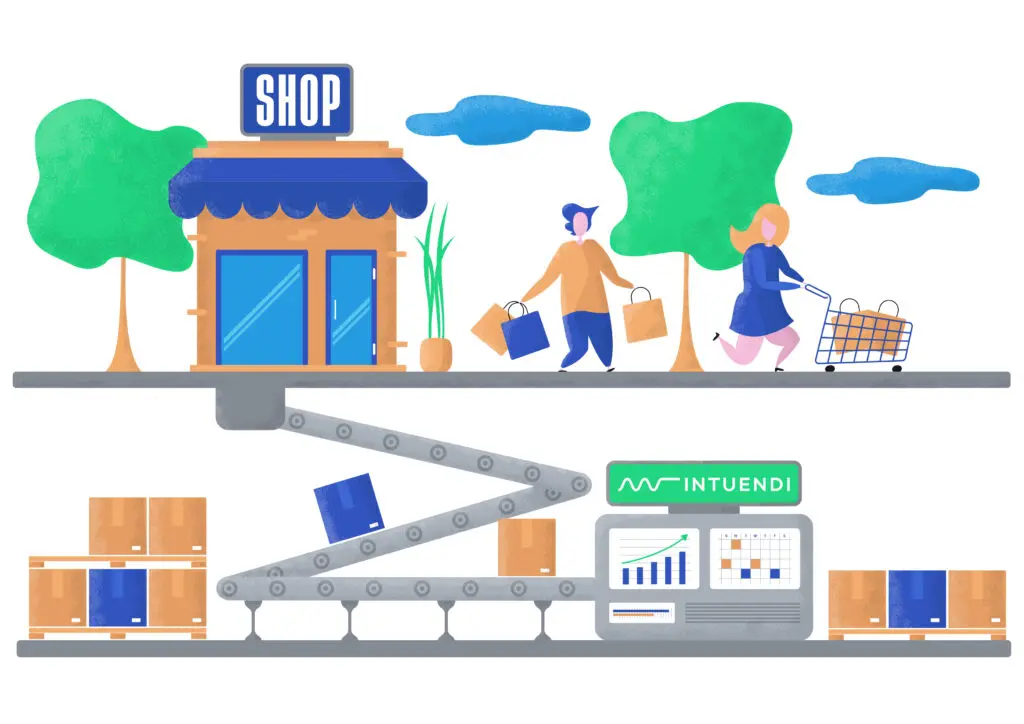In the complex world of inventory management and accounting, the Last-In, First-Out (LIFO) method stands out as a significant and often controversial approach. This method, which assumes that the most recently acquired inventory items are the first to be sold, has far-reaching implications for a company’s financial statements, tax liabilities, and overall business strategy. As we delve into the intricacies of LIFO, we’ll explore its applications across various industries, examine its benefits and drawbacks, and consider its place in modern accounting practices. Understanding LIFO is crucial for financial professionals, business owners, and students of accounting alike, as it provides a unique perspective on how companies can manage their inventory and financial reporting in response to changing economic conditions.
What is Last-In First-Out (LIFO)?
Last-in-first-out, commonly abbreviated as LIFO, is an inventory valuation method used in cost accounting. At its core, LIFO operates on the premise that the most recently produced or acquired items in a company’s inventory are recorded as sold first. This approach contrasts with other methods like First-In-First-Out (FIFO) or weighted average cost. The LIFO method was first introduced in the United States during the 1930s, a period marked by significant economic upheaval and inflation. It was developed as a response to the challenges businesses faced in accurately reflecting the cost of their inventory during times of fluctuating prices. The method gained legal recognition in the U.S. tax code in 1939, allowing companies to use LIFO for tax purposes if they also used it for financial reporting. One of the key milestones in the development of LIFO was the introduction of the dollar-value LIFO method in the 1950s. This variation allowed companies to apply LIFO to pools of similar items rather than individual units, making it more practical for businesses with large and diverse inventories. Over the years, LIFO has been the subject of much debate in accounting circles. While it remains a permissible method under U.S. Generally Accepted Accounting Principles (GAAP), it is prohibited under International Financial Reporting Standards (IFRS). This discrepancy has led to ongoing discussions about the global harmonization of accounting standards.
How LIFO Works
The LIFO method operates on a straightforward principle, but its implementation can be complex, requiring careful record-keeping and consistent application. Here’s a detailed look at how LIFO works in practice. Inventory Tracking is a very important component, Companies using LIFO must maintain detailed records of their inventory, including the date of purchase or production, cost, and quantity for each batch or lot of goods. Cost Assignment is yet another factor. When a sale occurs, the cost of the most recently acquired inventory is assigned to the Cost of Goods Sold (COGS). This means that the price of the latest inventory purchases is matched against current sales revenue.
LIFO consists of inventory layers. As inventory is acquired at different times and potentially different prices, it creates “layers” in the inventory. Each layer represents a batch of inventory purchased at a specific price. The difference between the inventory value under LIFO and what it would be under FIFO is known as the LIFO reserve. This figure is often disclosed in financial statements to provide additional context to investors and analysts. Companies can implement LIFO using either a periodic or perpetual system. In a periodic system, the ending inventory is calculated at specific intervals (e.g., monthly or annually). A perpetual system continuously updates the inventory and COGS with each sale and purchase. Many companies use the dollar-value LIFO method, which groups inventory into pools based on similar characteristics. This approach simplifies the LIFO calculation for companies with numerous inventory items.
Businesses typically follow these steps to implement LIFO. They should categorize inventory items and establish LIFO pools if using dollar-value LIFO. Additionally, they must determine the base year inventory cost for each pool. Businesses should calculate the current year’s inventory at both base year cost and current cost. They must compute the price index for each pool. The LIFO reserve should be calculated and the inventory valuation should be adjusted accordingly. Finally, businesses should update COGS and ending inventory in the financial statements.
Example of Last-In First-Out (LIFO)
To illustrate how LIFO works in practice, let’s consider a hypothetical example of a small electronics retailer, TechGadgets Inc., which sells smartphones:
January 1: TechGadgets Inc. starts the year with an inventory of 100 smartphones purchased at $500 each. March 15: The company purchases 150 smartphones at $550 each. June 30: Another purchase of 200 smartphones at $600 each. December 31: At the end of the year, TechGadgets Inc. has sold 300 smartphones.
Under the LIFO method, the Cost of Goods Sold (COGS) would be calculated as follows:
200 units at $600 = $120,000 (from the June 30 purchase) 100 units at $550 = $55,000 (from the March 15 purchase)
Total COGS = $175,000
The ending inventory would consist of: 50 units at $550 = $27,500 (remaining from March 15 purchase) 100 units at $500 = $50,000 (from the initial inventory)
Total ending inventory value = $77,500
This example demonstrates how LIFO uses the costs of the most recent purchases to calculate COGS, potentially resulting in a higher COGS and lower ending inventory value compared to other methods like FIFO.
In a real-world scenario, the impact of LIFO can be even more pronounced, especially for companies dealing with commodities or products subject to significant price fluctuations. For instance, an oil company using LIFO might report substantially different profits compared to one using FIFO during periods of volatile oil prices.
Advantages of LIFO Method
The LIFO method offers several significant advantages that make it an attractive option for many businesses, particularly in certain economic conditions: One of the primary advantages of LIFO is its potential for tax savings during periods of inflation. By matching the most recent (and typically higher) costs against current revenues, LIFO often results in higher COGS and lower taxable income. This can lead to substantial tax savings, especially for companies dealing with inventory that experiences frequent price increases. LIFO provides a more accurate picture of a company’s current operational costs. By using the most recent purchase prices to calculate COGS, it reflects the current market conditions more closely than other methods. This can be particularly beneficial in industries where prices are volatile or consistently rising. The tax savings generated by LIFO can improve a company’s cash flow. Lower tax liabilities mean more cash is retained within the business, which can be used for reinvestment, debt reduction, or other strategic initiatives. In inflationary environments, LIFO helps prevent the reporting of “phantom profits” that can occur when older, lower-cost inventory is sold at current higher prices. This provides a more conservative and arguably more realistic view of a company’s profitability.
Companies using LIFO may be able to maintain more stable pricing for their products. Since LIFO reflects current replacement costs in the COGS, businesses can more easily justify their pricing strategies based on current market conditions. For companies dealing with products that become obsolete quickly (like technology items), LIFO can help mitigate the financial impact of obsolescence. The older inventory items, which are more likely to become obsolete, remain on the books at their historical cost.LIFO can provide more flexibility in managing physical inventory. Since it’s an accounting method rather than a physical flow of goods, companies can manage their actual inventory in the most efficient way while still benefiting from LIFO’s accounting advantages In some cases, LIFO can improve certain financial ratios that are important to investors and creditors. For example, it often results in a lower inventory turnover ratio, which can be seen as a sign of efficient inventory management. These advantages make LIFO particularly appealing to companies operating in industries with rising costs or those seeking to minimize their tax liabilities. However, it’s important to note that the benefits of LIFO must be weighed against its potential drawbacks and the specific circumstances of each business.
Disadvantages of LIFO Method
While LIFO offers several advantages, it also comes with significant drawbacks that businesses must consider. One of the most significant criticisms of LIFO is that it can lead to unrealistic balance sheet valuations. Since older, potentially outdated costs are used to value the remaining inventory, the balance sheet may not accurately reflect the current market value of the company’s inventory. This can be particularly problematic in industries where inventory values appreciate over time. Implementing and maintaining a LIFO system can be more complex than other inventory valuation methods. It requires detailed record-keeping of inventory layers and costs, which can be challenging, especially for businesses with large or diverse inventories.
LIFO can be used to manipulate reported income by timing inventory purchases. For example, a company could artificially lower its taxable income by making large inventory purchases just before the end of a financial period. LIFO is not allowed under International Financial Reporting Standards (IFRS), which are used in many countries outside the United States. This can create complications for multinational companies or those considering international expansion. In most cases, LIFO doesn’t reflect the actual physical flow of inventory. This can make it harder for managers to intuitively understand inventory costs and movements.
During inflationary periods, LIFO typically results in lower reported profits compared to other methods like FIFO. While this can lead to tax savings, it may also make the company appear less profitable to investors and stakeholders. If a company reduces its inventory levels, it may have to recognize older, lower-cost inventory layers in its COGS. This “LIFO liquidation” can lead to sudden increases in reported profit, which may not accurately reflect current business performance. In the United States, companies using LIFO for tax purposes must also use it for financial reporting (known as the LIFO conformity rule). This can limit a company’s flexibility in presenting its financial position.
LIFO, Inflation, and Net Income
The relationship between LIFO, inflation, and net income is a crucial aspect of understanding the method’s impact on financial reporting. During periods of inflation, LIFO typically results in higher COGS and lower net income compared to other inventory valuation methods. This is because the most recent (and usually higher) costs are matched against current revenues. The difference between inventory valuation under LIFO and FIFO is known as the LIFO reserve. As prices increase, this reserve grows, representing the cumulative impact of LIFO on the company’s reported profits. Lower reported income due to LIFO can lead to lower tax liabilities, which is often seen as a primary benefit of the method. However, this also means that reported profits may not align with the company’s economic reality. Analysts and investors need to be aware of a company’s use of LIFO and its potential impact on financial statements. The LIFO reserve disclosure can be used to estimate what the company’s financial position would be under FIFO. In periods of stable prices, the impact of LIFO on net income is minimal. However, in deflationary periods, LIFO can lead to higher reported profits as lower recent costs are matched against revenues. While LIFO may reduce reported profits, it can improve cash flow by reducing tax liabilities. This can be particularly beneficial for companies in capital-intensive industries. Over extended periods of inflation, companies using LIFO may accumulate significant LIFO reserves. This can lead to a substantial understatement of inventory values on the balance sheet.
LIFO vs. FIFO
Comparing LIFO with the First-In, First-Out (FIFO) method provides insight into the strategic choices companies face in inventory valuation. LIFO assumes that the most recently acquired inventory is sold first, while FIFO assumes the oldest inventory is sold first. This fundamental difference leads to varying impacts on financial statements. FIFO typically results in balance sheet inventory valuations that more closely reflect current market values. LIFO, on the other hand, can lead to significantly understated inventory values, especially during periods of long-term inflation. During inflationary periods, LIFO generally results in higher COGS and lower net income compared to FIFO. This can lead to lower tax liabilities but may also make the company appear less profitable. FIFO often aligns more closely with the physical flow of inventory in many businesses, while LIFO is primarily an accounting concept rather than a reflection of actual inventory movement. Furthermore, FIFO is generally simpler to implement and maintain, requiring less complex record-keeping compared to LIFO.
FIFO is widely accepted globally and is compliant with both U.S. GAAP and IFRS. LIFO, however, is only permitted under U.S. GAAP. FIFO may be more suitable for industries with perishable goods or where product obsolescence is a concern. LIFO is often preferred in industries with stable or increasing inventory costs. Companies using different methods can be challenging to compare directly. Analysts often adjust for these differences using the LIFO reserve information provided in financial statements. In times of rising prices, LIFO is often considered to provide a more accurate picture of a company’s economic reality by matching current costs with current revenues. In periods of declining prices, FIFO may result in lower COGS and higher profits, while LIFO would show higher COGS and lower profits. Understanding these differences is crucial for managers making decisions about inventory valuation methods, as well as for investors and analysts interpreting financial statements.
Impact of LIFO Inventory Valuation Method on Financial Statements
The LIFO method has significant impacts on a company’s financial statements, affecting both the balance sheet and income statement:
Balance Sheet Effects:
LIFO typically results in a lower inventory valuation on the balance sheet, especially during inflationary periods. This is because older, lower-cost inventory layers remain on the books. Companies must disclose the LIFO reserve, which represents the difference between LIFO and FIFO inventory valuations. This allows users of financial statements to estimate the current market value of inventory. The lower inventory valuation under LIFO can result in lower working capital ratios, which may affect the company’s perceived liquidity.
Income Statement Effects:
During inflationary periods, LIFO typically results in a higher Cost of Goods Sold (COGS) as more recent, higher-cost inventory is expensed first. The higher COGS leads to lower gross profit and net income compared to other inventory valuation methods. Lower reported income often results in lower tax liabilities, which is a key advantage of LIFO.
Cash Flow Statement:
While LIFO doesn’t directly affect the cash flow statement, the lower tax liabilities resulting from its use can lead to improved operating cash flows.
Financial Ratios:
LIFO can result in a lower inventory turnover ratio due to the lower average inventory value. The higher COGS under LIFO typically leads to a lower gross profit margin. Return on Assets (ROA): The combination of lower net income and lower asset values can have a complex effect on ROA.
Disclosure Requirements:
Companies using LIFO are required to disclose certain information in their financial statement notes, including the LIFO reserve and the effect of LIFO on their income. Understanding these impacts is crucial for financial analysts, investors, and managers when interpreting financial statements and making comparisons between companies using different inventory valuation methods.
LIFO in Accounting Standards
 The use of LIFO is subject to various accounting standards and regulations, which differ significantly between the United States and the rest of the world. The differences in accounting standards globally create challenges for multinational corporations and can complicate cross-border comparisons of financial statements. Companies considering the use of LIFO must carefully evaluate these standards and their implications for financial reporting and tax compliance.
The use of LIFO is subject to various accounting standards and regulations, which differ significantly between the United States and the rest of the world. The differences in accounting standards globally create challenges for multinational corporations and can complicate cross-border comparisons of financial statements. Companies considering the use of LIFO must carefully evaluate these standards and their implications for financial reporting and tax compliance.
U.S. GAAP: Under U.S. Generally Accepted Accounting Principles (GAAP), LIFO is an acceptable inventory valuation method. The LIFO conformity rule requires companies using LIFO for tax purposes to also use it for financial reporting.
IFRS: International Financial Reporting Standards (IFRS) prohibit the use of LIFO. This prohibition is based on the view that LIFO does not accurately represent the actual flow of inventory in most businesses.
LIFO Conformity Rule: This rule, established by the U.S. Internal Revenue Service (IRS), requires companies using LIFO for tax purposes to use it for financial reporting as well. The rule aims to prevent companies from using LIFO solely for tax benefits while reporting higher profits under other methods.
Disclosure Requirements: Companies using LIFO must disclose the LIFO reserve, which is the difference between LIFO and FIFO inventory valuations. They must also disclose the impact of LIFO on their cost of goods sold and net income.
LIFO Liquidations: Accounting standards require special disclosures when a company experiences a LIFO liquidation, which occurs when it sells more inventory than it purchases in a given period.
Change in Accounting Method: Switching to or from LIFO is considered a change in accounting method and requires specific procedures and disclosures.
Industry-Specific Regulations: Some industries have specific guidelines or restrictions regarding the use of LIFO, often due to the nature of their inventory or business operations.
SEC Reporting: Public companies in the U.S. must adhere to additional reporting requirements set by the Securities and Exchange Commission (SEC) regarding their use of LIFO.
Implementing LIFO in Practice
Implementing the LIFO method requires careful planning and execution, requiring significant effort and ongoing attention to detail. However, for businesses that can benefit from its use, the potential tax savings and improved matching of current costs with revenues can make it a valuable inventory valuation method. Here’s a step-by-step guide to the practical aspects of adopting and maintaining LIFO, if this method is one that interests you and your business needs:
- Decision to Adopt LIFO: Evaluate the potential benefits and drawbacks for your specific business. Consider factors such as inventory price trends, tax implications, and industry norms. Consult with accounting professionals and tax advisors.
- Obtaining IRS Approval: File Form 970 with the IRS to elect LIFO treatment for tax purposes. This must be done within the first tax year of LIFO adoption.
- Choosing a LIFO Method: Decide between specific goods LIFO and dollar-value LIFO. For dollar-value LIFO, determine appropriate inventory pools.
- Establishing Base Year Costs: Determine the base year for LIFO calculations. Document the costs and quantities of inventory items in the base year.
- Implementing Inventory Tracking Systems: Set up systems to track inventory costs and quantities by acquisition date. Ensure your accounting software can handle LIFO calculations.
- Adjusting Accounting Procedures: Modify the chart of accounts to accommodate LIFO. Establish procedures for calculating COGS under LIFO.
- Training Staff: Educate accounting and inventory management staff on LIFO principles and procedures. Ensure they understand the implications for financial reporting and tax filing.
- Transitioning from Another Method: If switching from FIFO or another method, calculate the cumulative effect of the change. Make necessary adjustments to opening inventory and retained earnings.
- Ongoing Maintenance: Regularly update LIFO layers as new inventory is acquired. Perform periodic LIFO reserve calculations.
- Documentation and Record-Keeping: Maintain detailed records of inventory costs, quantities, and LIFO calculations. Keep documentation to support LIFO calculations for audit purposes.
- Financial Statement Disclosures: Prepare required disclosures about LIFO usage in financial statements. Calculate and disclose the LIFO reserve.
- Handling LIFO Liquidations: Develop procedures for identifying and accounting for LIFO liquidations.
- Annual LIFO Calculations: Perform year-end LIFO calculations to determine ending inventory value and COGS.
- Tax Reporting: Ensure tax returns accurately reflect LIFO inventory valuations. Be prepared to provide supporting documentation for LIFO calculations during tax audits.
Practical Applications of the LIFO Method
The LIFO method finds practical applications in various industries and business contexts.
In the manufacturing industry, automobile manufacturers often use LIFO to better match current production costs with sales revenues. Steel producers benefit from LIFO due to fluctuating raw material prices. However, in the retail sector, large retailers may opt for LIFO to manage the impact of rising inventory costs on their financial statements. Supermarket chains can use LIFO to reflect the current cost of goods in their pricing strategies. LIFO is particularly popular in the oil and gas industry due to volatile commodity prices. It helps these companies match the current high costs of oil with current high selling prices. Even companies producing perishable goods make use of the LIFO method – pharmaceutical companies may use LIFO to manage the impact of rising research and development costs on their inventory valuations. Furthermore, Companies dealing with rapidly changing technology costs may find LIFO beneficial for reflecting current market conditions. LIFO can additionally help distributors manage the impact of price fluctuations in their inventory costs.
LIFO can be used as part of a broader cost management strategy, helping companies to better understand and control their inventory costs. By reflecting current costs, LIFO can inform pricing decisions, especially in industries with volatile input costs. Companies can use LIFO as part of their overall tax strategy to potentially reduce taxable income during inflationary periods. LIFO can be integrated into financial reporting processes to provide a more conservative view of a company’s financial position. While LIFO is an accounting method, it can inform physical inventory management practices by highlighting the importance of managing newer, higher-cost inventory. In industries with significant price volatility, LIFO can be part of a risk management strategy to mitigate the impact of price fluctuations on reported earnings. Companies using LIFO may need to consider the implications of their inventory valuation method in M&A scenarios.
LIFO Method in Inventory Management
While LIFO is primarily an accounting concept, it has implications for inventory management practices. Implementing LIFO often requires sophisticated inventory tracking systems that can maintain detailed records of costs and purchase dates. LIFO requires careful management of inventory layers, which can influence decisions about when to purchase new inventory. Although LIFO doesn’t necessarily reflect the physical flow of goods, it can inform decisions about which inventory to sell or use first. LIFO provides a different perspective on inventory costs, which can be valuable for cost analysis and decision-making. The use of LIFO can impact budgeting and forecasting processes, particularly in industries with volatile input costs. Regular calculation of the LIFO reserve helps in understanding the current market value of inventory. LIFO can sometimes mask inventory obsolescence issues, requiring separate processes to identify and manage outdated stock. Understanding the impact of LIFO on reported costs can influence supply chain decisions, such as when and how much inventory to purchase. LIFO affects various inventory-related performance metrics, which should be considered when evaluating inventory management effectiveness. Inventory management software must be capable of handling LIFO calculations and reporting requirements.
Why Is LIFO Accounting Banned in Most of the World?
The prohibition of LIFO in many jurisdictions outside the United States is rooted in several factors. Critics argue that LIFO can lead to an unrealistic representation of a company’s assets, particularly during periods of inflation. There are also concerns that LIFO can be used to manipulate reported earnings through strategic inventory purchases. LIFO often doesn’t reflect the actual physical flow of inventory in most businesses, which goes against the principle of faithful representation in accounting. The ban on LIFO under IFRS is part of a broader effort to harmonize accounting standards globally. Some countries view LIFO as primarily a tax avoidance strategy rather than a method that accurately reflects economic reality.LIFO is additionally considered more complex to implement and maintain compared to other inventory valuation methods. The use of LIFO can make it difficult to compare financial statements across different companies and countries. Some accounting standard-setters believe that FIFO or weighted average cost methods better adhere to the historical cost principle. There’s a view that LIFO doesn’t always reflect the economic substance of inventory transactions, especially in non-inflationary environments. Many regulatory bodies outside the U.S. prefer methods that they believe provide a more current and accurate view of a company’s inventory value. The ban on LIFO in most countries highlights the ongoing debate about the balance between tax considerations, faithful representation of financial position, and the need for globally comparable financial statements.
Conclusion
The LIFO method remains a significant, albeit controversial, approach to inventory valuation. Its unique ability to match current costs with current revenues provides valuable benefits, particularly in inflationary environments and for tax purposes. However, these advantages come with notable drawbacks, including potential misrepresentation of balance sheet values and complexities in implementation and maintenance. The continued acceptance of LIFO under U.S. GAAP, contrasted with its prohibition under IFRS, underscores the ongoing debate about its merits and drawbacks. This discrepancy also highlights the challenges in achieving global accounting harmonization.
For businesses considering LIFO, careful analysis of its potential impacts on financial statements, tax liabilities, and operational practices is crucial. The decision to adopt LIFO should be made in consultation with accounting professionals, considering industry norms, regulatory requirements, and the specific economic conditions facing the business. As the global business environment continues to evolve, the future of LIFO remains uncertain. While it continues to offer significant benefits to many U.S. companies, the trend toward international accounting convergence may put pressure on its long-term viability. Ultimately, understanding LIFO and its implications is essential for financial professionals, business owners, and students of accounting. Whether embracing LIFO or opting for alternative methods, a thorough comprehension of inventory valuation techniques is crucial for effective financial management and decision-making in today’s complex business landscape.






